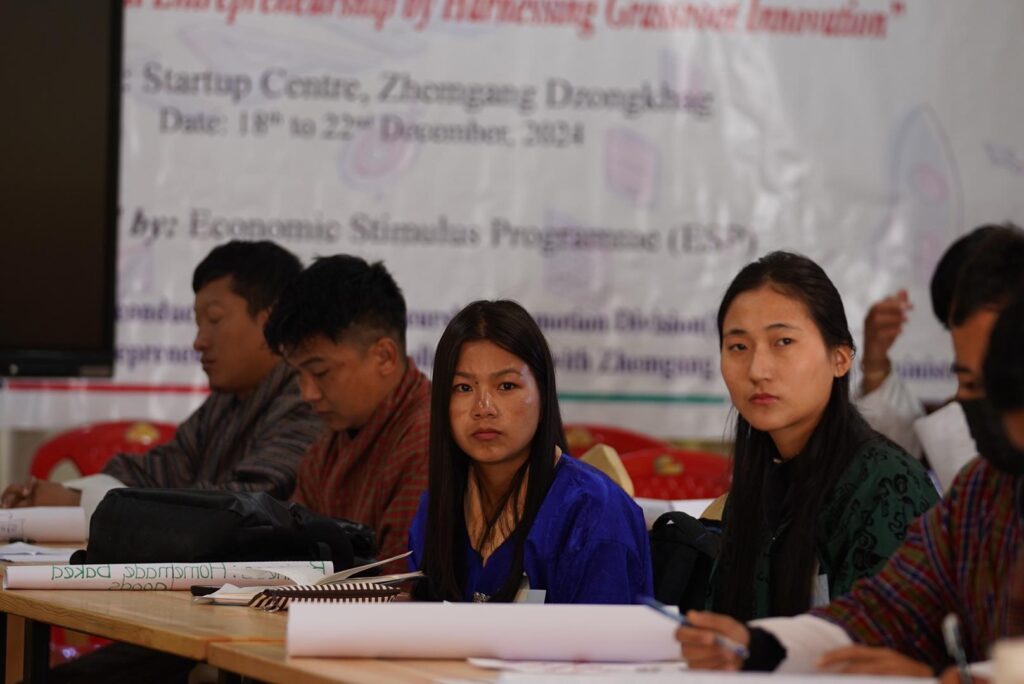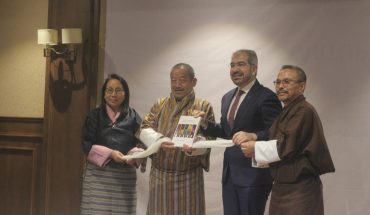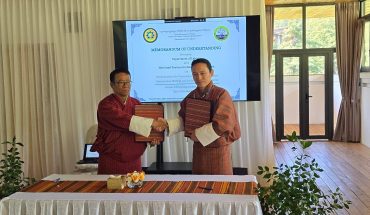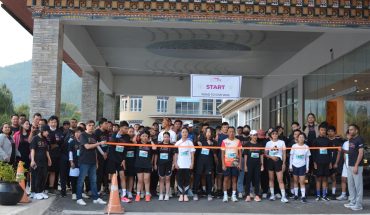
RENUKA RAI
Thimphu
In the midst of economic headwinds and demographic pressures, Bhutan is crafting a compelling response to one of the most urgent questions facing the nation: to provide meaningful and sustainable employment for its people, particularly the youth.
The Department of Employment and Entrepreneurship’s (DoEE) 2023–24 Annual Report offers a detailed and candid look at how the Royal Government of Bhutan is attempting to tackle this challenge.
Through its various programs and initiatives, the Department is drawing a path toward a more inclusive, innovative, and resilient labour market.
According to the report, the national unemployment rate remains modest at 3.7 percent, but the youth unemployment rate stands at a troubling 19.2 percent. The figure reflects the frustration and uncertainty felt by many young Bhutanese seeking to define their futures.
Behind that percentage lies a gender gap as well: more young women are unemployed compared to their male counterparts. The government’s response has been to craft targeted strategies that aim not only to absorb young people into the workforce but also to equip them with the tools they need to thrive in it.
One of the centrepieces of this strategy is the Youth Engagement and Livelihood Program (YELP). Over the past year, this program has quietly but significantly contributed to the nation’s employment landscape by offering transitional work opportunities to fresh graduates and job seekers.
With a monthly stipend of Nu 5,000, YELP placements serve both the individual and the broader economy. These placements are helping bridge the daunting gap between education and employment.
Participants, many of whom are women, find themselves embedded in sectors ranging from agriculture and manufacturing to accommodation and education. These engagements provide more than paychecks—they offer experience, mentorship, and exposure.
A tracer study conducted on earlier cohorts of YELP and Build Bhutan Program (BBP) beneficiaries found that more than 41 percent had secured permanent positions following their participation, and many others had moved into contractual work or self-employment.
While Bhutan has focused on building opportunities at home, it has also continued to look outward. The Overseas Employment Program (OEP) remains a key component of Bhutan’s employment strategy, offering citizens the chance to earn and learn abroad.
Since its inception in 2013, the OEP has helped thousands find employment overseas, primarily in the Middle East and, more recently, in sectors like nursing in Singapore.
The 2023–24 fiscal year saw 1,678 job seekers placed in foreign positions—almost 90 percent of them in Kuwait. The placements predominantly involved hospitality and retail roles, with women accounting for more than 65 percent of overseas workers.
The program is guided by a comprehensive national strategy that emphasizes safe, fulfilling, and legally protected employment. By facilitating these overseas opportunities through both government-led and private employment agencies, the government ensures that its workers are not only placed but supported.
Domestically, the Department’s Entrepreneurship Promotion Division has taken a grassroots approach to nurturing business-minded individuals.
The department also conducts Basic Entrepreneurship Courses throughout the country, especially in districts like Zhemgang, Samtse, Trongsa, and Sarpang, where economic opportunities are relatively limited.
These courses are designed around CEFE (Competency-based Economies, Formation of Enterprise), an experiential methodology that uses games, fieldwork, and real-world simulations to teach practical business skills.
In 2023–24 alone, over 1,000 aspiring entrepreneurs completed the course, many of them young men and women with educational backgrounds below Class XII. These trainees leave the program with business plans in hand and the confidence to take their ideas forward.
Employment services are also being modernized. The Bhutan Labour Market Information System (BLMIS), a digital platform that connects job seekers and employers, registered over 18,000 new users this year.
About 2,000 individuals were placed in jobs, and another 1,700 were referred to employers. The system now acts as a real-time labour market repository while the Department has also continued to invest in Employment Service Centres (ESCs), where young people can get help with CV writing, interview skills, career counselling, and job matching.
These centres also help employers announce vacancies, conduct interviews, and even recruit foreign workers. The National Employment Policy of 2013 had envisioned these ESCs as “one-stop shops,” and the Department is working hard to make that vision a reality despite challenges in staffing and infrastructure.
Nonetheless, the report states that there remains a significant mismatch between the skills that young people possess and the demands of the market. Too many graduates are still seeking employment that either does not exist or requires experience they do not yet have.
To address this, the Department is developing strategic interventions that include greater coordination with educational institutions, enhanced data collection on labour trends, and improved implementation of career guidance programs in schools.
“Employment is no longer being treated merely as an economic statistic. It is now being approached as a fundamental aspect of social wellbeing and national development,” states the report.
DoEE’s approach, as per the report, is evidence-based, collaborative, and focused on building capacity rather than dependency, and it may well become a model for other small nations seeking to balance tradition with modernity.





